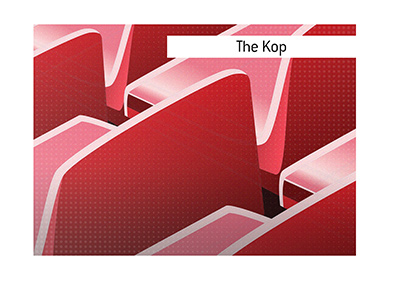Definition of The Kop
Featured Offer:
Bet £10 & Get £30 in Free Bets
Use Bonus Code:
THEKING
Open Account Offer. Bet £10 & Get £30 in Free Bets for new customers at bet365. Min deposit requirement.
Free Bets are paid as Bet Credits and are available for use upon settlement of bets to value of qualifying deposit.
Min odds, bet and payment method exclusions apply. Returns exclude Bet Credits stake. Time limits and T&Cs apply.
Registration required. The bonus code THEKING can be used during registration, but does not change the offer amount in any way.
18+ only. Gamble responsibly.


 The name surprisingly comes from a battlefield in South Africa over a hundred years ago. During the Boer War, a British army fought to capture a hilltop, with 300 men perishing in the attempt. Many of these men came from Lancashire and the city of Liverpool. The hill's name? Spion Kop - or Spioenkop in South African.
The name surprisingly comes from a battlefield in South Africa over a hundred years ago. During the Boer War, a British army fought to capture a hilltop, with 300 men perishing in the attempt. Many of these men came from Lancashire and the city of Liverpool. The hill's name? Spion Kop - or Spioenkop in South African. 